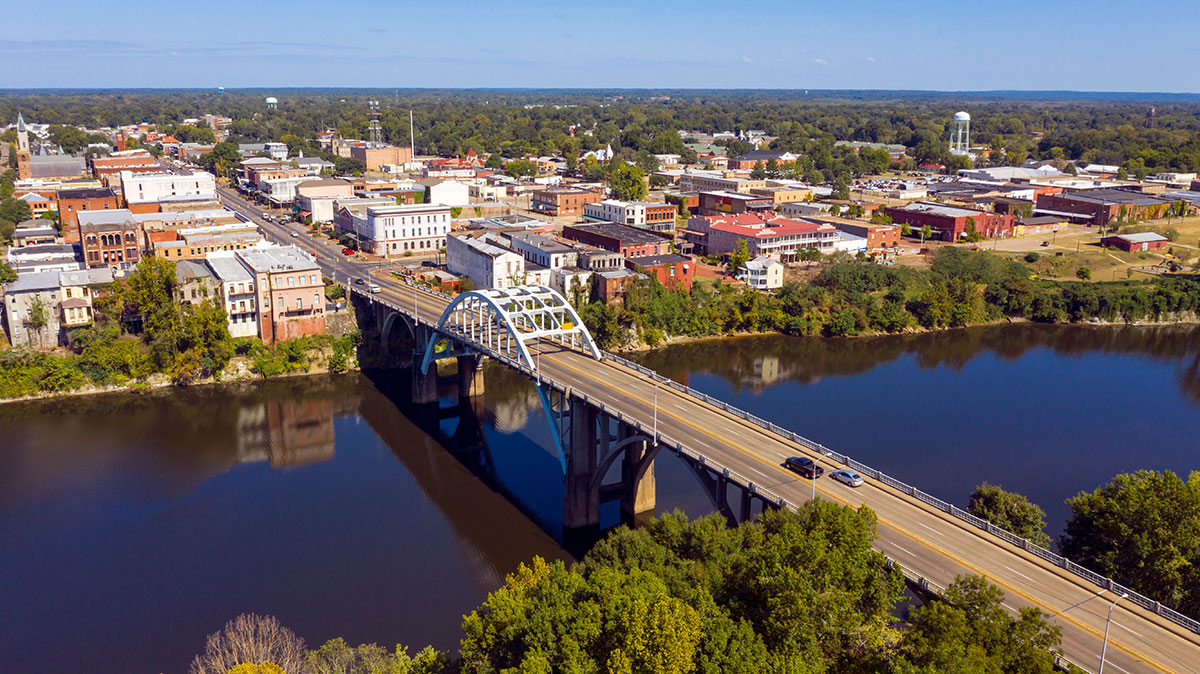One County at a Time
Economic development doesn’t happen in a vacuum. It doesn’t come in one-size-fits-all programs or blanket policies that try to apply the same solution to every community. Real, lasting economic growth starts at the ground level—with people, places, and purpose. And in a state like Alabama, where every county has a unique history, economy, and identity, that means getting local.
That’s why I’ve spent the last two decades working with communities county by county. I’ve visited all 67 Alabama counties more than 25 times. I’ve met with business owners, local officials, church leaders, educators, and families from every corner of the state. And what I’ve learned is this: if you want to build a stronger state, you start by understanding each county as its own opportunity—not a problem to solve, but a partner to work with.
Why Local Understanding Matters
You can’t build what you don’t understand. And you certainly can’t lead a community you’ve never stepped foot in.
Each Alabama county has its own assets—natural resources, industrial strengths, tourism potential, cultural heritage, or entrepreneurial spirit. But each one also has its own challenges—limited infrastructure, population decline, or education gaps. The key to success is knowing both.
That’s where the county-by-county model makes all the difference. By physically showing up, listening to the community, and walking the land, you learn things no report or dataset could ever show you. You learn who the decision-makers are—not just in title, but in trust. You learn which buildings could be repurposed, which industries could be retrained, and which traditions could be turned into tourism dollars.
You build relationships, not just plans.
Local Leadership is the Foundation
The best economic development doesn’t happen to a community—it happens with it. One of the biggest advantages of a county-by-county approach is the ability to empower local leaders to take ownership of their own future.
Too often, rural leaders are overlooked or left out of conversations at the state level. But when you invest in their vision, equip them with tools, and involve them in every step of the process, they rise to the occasion. They know their people. They know their past. And when given the chance, they will shape their future.
From mayors and city council members to school principals and small business owners, I’ve seen what happens when leadership is localized. Projects get done faster. Public trust increases. And solutions are built for the long term—not just to check a box on a state report.
Custom Strategies Create Real Results
The difference between success and stagnation often comes down to customization. What works in Baldwin County doesn’t necessarily work in Pickens. A tourism-driven town needs a different strategy than one built around agriculture or manufacturing.
That’s why my work across Alabama has focused on tailoring strategies to fit the identity, workforce, and market potential of each county.
- In some counties, that meant developing downtown revitalization plans that combined historic preservation with new retail opportunities.
- In others, it meant leveraging local community colleges to build pipelines for skilled trade jobs that aligned with regional industry.
- In farming-heavy areas, we focused on agribusiness incubators and farm-to-market logistics.
- In culturally rich counties, we promoted heritage tourism as a key economic driver.
One plan does not fit all. And the county-by-county approach allows us to design each plan with surgical precision, instead of using a hammer where a scalpel is needed.
Data Still Matters—But So Does Heart
I’m a big believer in data. Budgets, labor statistics, tax revenue forecasts—they’re all essential to making informed decisions. But data alone doesn’t drive economic development. People do.
When I sit down with a local grandmother who tells me she just wants her grandkids to stay in town after graduation, or when a 20-something entrepreneur asks how to start a business in a building that’s sat empty for decades—that’s what guides my decisions.
The numbers will tell you where to invest, but the people will tell you why.
Scaling the Model
Some might ask: Isn’t the county-by-county model time-consuming? Yes, it is. But it’s worth every mile, every meeting, and every moment spent building real relationships.
This approach doesn’t slow things down—it makes them stronger. When counties feel heard, they act with confidence. When leaders see momentum, they rally. When residents feel included, they support change.
The best part? Once you’ve built that foundation, counties start helping each other. They share resources, ideas, and even workforce strategies. Over time, this grassroots model turns into a statewide network of progress.
Alabama: A Case Study in Ground-Level Success
Here in Alabama, we’ve proven that rural counties don’t need to wait on handouts or big city policies. They can be the drivers of their own destiny. Through local engagement, policy alignment, strategic partnerships, and a willingness to show up—every county in our state is part of a broader transformation.
The county-by-county advantage isn’t just theory. It’s reality. It’s how we’ve retained businesses, recruited new industries, supported small town retail, and built hope where some thought it was gone.
And if we can do it in Alabama, I believe others can too.
Moving Forward, One County at a Time
In a world of top-down programs and sweeping federal proposals, we need to remember the power of starting small—and staying close.
The county-by-county model works because it respects each community’s identity. It listens before it acts. It builds from the inside out. And most importantly, it sees people not as numbers, but as neighbors.
To truly transform rural America, we don’t need louder voices—we need more local ones. And we need leaders willing to drive the distance, shake the hands, and walk the streets that too many others overlook.
That’s what I’ve done. And I’ll keep doing it. Because one county at a time isn’t just a strategy—it’s a promise. One rooted in faith, service, and the belief that every place matters.
